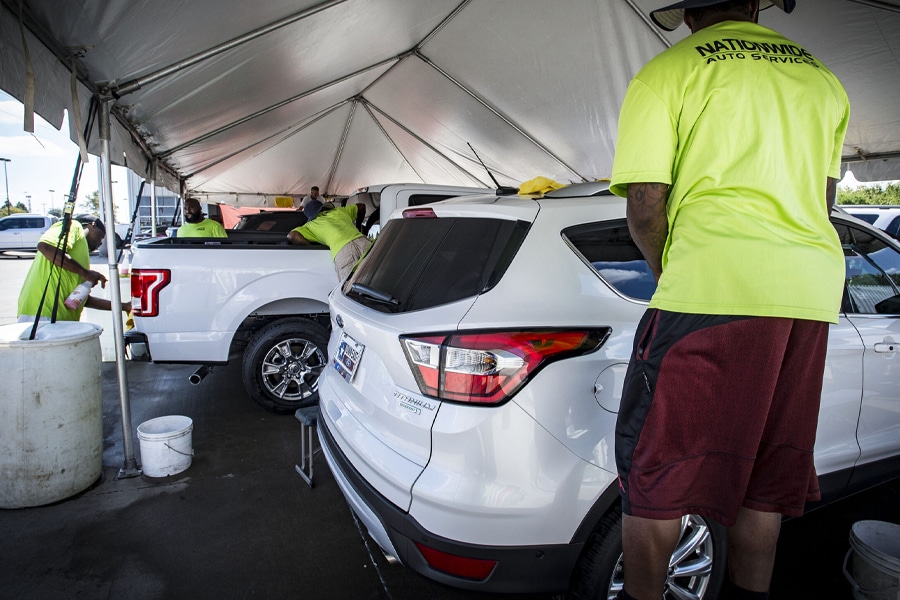Case Study: Saving 800 Export Vehicles at the Port of Savannah in a 24-Hour Crisis
Export Vehicle Contamination Event
Over a Thanksgiving weekend, Nationwide Auto Services (NAS) was contacted by a major global OEM about an export vehicle contamination. Also, to inspect and identify a process to remove paint overspray from 800 non-U.S. spec export vehicles destined for New Zealand/Australia customers. The objective was to complete all cars before the next vessel loading.
Due to the vessel loading interval being one month, the lead-time delay would have been 4-6 additional weeks if the vehicles were not ready by the next vessel port call at Savannah.
NAS was on site in 24 hours to evaluate all vehicles, determine the source of contamination, and identify the remediation process. Fallout discovered was marine lacquer overspray from a nearby port contractor.
Following this finding, NAS immediately advised the OEM and received approval to implement the written restoration process.
Port of Savannah Case Study – Daily Production
The use of a NAS specialized cleaning solution was included as well. All wrap guard and wheel film removed. A daily production goal of 40 units per day was established. Vehicles cleaned, re-wrapped, and wheel film reapplied, re-inspected, then staged in time for next vessel loading at the Port of Savannah.
NAS managed the entire process for this Major Japanese export of right-hand drive, new 2WD and 4WD models. Vehicles were categorized into three groups based on overspray severity: light, moderate, and heavy. Working with the OEM, vehicle repairs were based on first in first-in-first-out port of entry arrival. NAS coordinated weekly calls and meetings with all stakeholders. Georgia Ports Authority, OEM, Port Contractor, port processor, and insurance carriers to keep the project on track.
NAS delivered vehicles to the customer in new vehicle factory condition without any negative impact on the end user.
Specifically, this project is unique because of the holiday scramble to save non U.S. right hand drive vehicles going to New Zealand/Australia Distributors would have to wait 6-8 additional weeks for the hottest vehicles that were all sold orders.
The NAS repair process made the difference, and the ship was delivered as planned on schedule without any complaints or OEM embarrassment.
“The source paint contained aluminum particles in it, which means mechanical buffing could not be used, or it would scratch the finish,” said Jim Gerencser, owner of Nationwide Overspray. “The original car paint is extremely soft. Comparatively, our overspray removal techniques are designed to be gentle. We did not want to add to the damage.”
Port of Savannah Case Study – Climate Control
The cars were housed in a 50,000 square foot section of a large warehouse. The warehouse owners were repainting the ceiling and support poles in the vacant spaces for new tenants.
The paint contractor was using spray guns to apply the aluminum–based paint. The ceiling-to-wall junctions have small gaps along with roll-up doors. In addition, the space housing the car collection was not climate-controlled. Several large fans were in use to exhaust the warm air to the outside.
Consequently, this created a suction that pulled a fine mist of paint through the tiny gaps and into the car collection space. Additionally, as a result, fine mist “rained” on the entire car collection. Basically, we used lab-tested paint analysis and liability determination to understand the makeup of the overspray.
In addition, Nationwide Overspray uses special light tunnels to see and clean the tiniest speck of paint. The cars were cleaned successfully. Afterwards, the collection owner was relieved.

